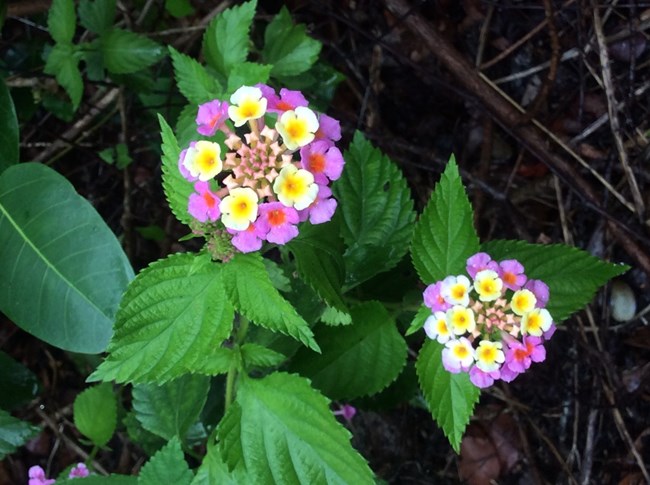
NPS Photo/Brooke Shamblin
Invasive/exotic plants are one of the most serious threats to maintaining ecosystem integrity in the South Florida and Caribbean parks. Once established, invasive exotic plant species can affect park natural resources and visitor satisfaction by altering the natural landscape, reducing habitat for native plants and animals, and increasing demand on park resources for trail maintenance and exotic plant eradication efforts. Detecting new species with the potential to become invasive, while they are still in small controllable populations, is important to the cost-effective management of this problem. Tracking newly forming and established populations of known invasive species across the landscape is important for an effective control strategy for planning and implementation.
The South Florida/Caribbean Network (SFCN), in collaboration with the Florida and Caribbean Exotic Plant Management Team (EPMT), has created an early detection and rapid response plan to manage exotic and invasive plants. A pilot study for the Corridors of Invasiveness Protocol was conducted in 2009 in Big Cypress National Preserve, Biscayne National Park, and Everglades National Park. The formal South Florida\Caribbean Network Early Detection Protocol for Invasive Exotic Plants: Corridors of Invasiveness was completed in 2013.
Our monitoring objectives are:
- Detect newly emerging invasive plant species in the National Parks of South Florida along the most likely routes, or corridors, for infestations (e.g., trails, roadways, waterways, campgrounds, and boat launches.)
- Determine the status and trends of known problematic invasive exotic plants extent and distribution.
The basic approach to the Corridors of Invasiveness protocol is to conduct exotic plant surveys by scanning corridors, i.e., main roads, trails, canals, campgrounds, and boat launches within the National Parks of South Florida for exotic plant species. Surveys are conducted by an experienced SFCN botanist along with the assistance of a Florida and Caribbean EPMT member. When exotic species are found, data is collected and in the case of small infestations, the surveyors may eradicate the population of exotics by either applying an herbicide to the infestation, or by pulling them out of the ground by the roots. Larger infestations are reported immediately to park botanists, resource managers, and to the South Florida and Caribbean Exotic Plant Management Team Coordinator. The data collected is also uploaded to the Early Detection and Distribution Mapping System website (EDDmaps Mapping Project), a web based mapping system that documents the location and distribution of invasive species around the world.
Invasive Exotic Plants publications
Find all brochures, monitoring reports, protocols, and resource briefs below.Source: NPS DataStore Saved Search 1254 (results presented are a subset). To search for additional information, visit the NPS DataStore.
Source: NPS DataStore Saved Search 3660. To search for additional information, visit the NPS DataStore.
Source: NPS DataStore Saved Search 2338 (results presented are a subset). To search for additional information, visit the NPS DataStore.
Source: NPS DataStore Saved Search 2340 (results presented are a subset). To search for additional information, visit the NPS DataStore.
Source: NPS DataStore Saved Search 1257 (results presented are a subset). To search for additional information, visit the NPS DataStore.
Invasive Exotic Plants image gallery
Find pictures of invasive exotic plants below.Last updated: March 30, 2021
